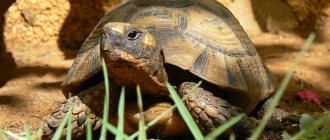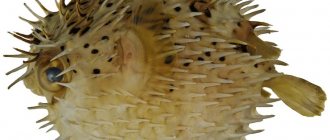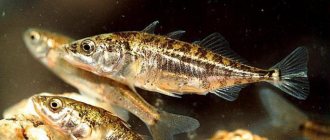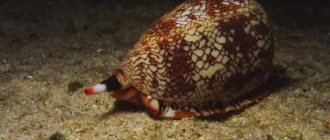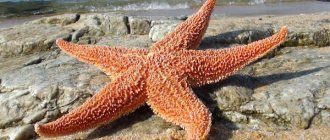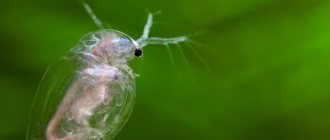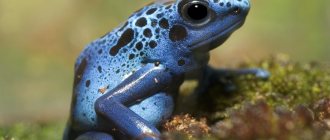XXI CENTURY Candy Fudge Scented water
266 ₽ More details
Video baby monitor Motorola MBP36S (white)
12900 ₽ More details
Light jacket for men
The descendants of extinct dinosaurs are numerous reptiles. The list of reptiles includes about ten thousand species. They all breathe through lungs, and their skin is covered with horny scales that protect it from drying out. There are 72 species of reptiles living in our country alone.
The list of reptiles includes about ten thousand species
What are reptiles?
Reptiles are vertebrate animals, which are located, according to classification, after amphibians (amphibians) and before birds and mammals. They are also known as reptiles. During the Mesozoic era, such large and formidable representatives of this class as dinosaurs lived on Earth. Today, the group of these animals is represented by lizards, crocodiles, turtles, snakes and beaked animals.
Ancient reptiles are a land dinosaur, an aquatic plesiosaur and an ichthyosaur, a flying pterosaur. They dominated everywhere and were the real rulers of the planet. Currently, species of this class live in warm climatic zones on land and in water.
Photo: pixabay.com: UGC
The reptile class is characterized by such features as:
- dry skin covered with scales, scutes or shell, without skin glands;
- The respiratory system of reptiles is represented by the lungs;
- they are cold-blooded animals;
- have well-developed muscles and skeleton, usually crawl on the ground;
- reproduce by eggs, which are laid on the ground;
- make hissing and wheezing sounds;
- Depending on the species, they feed on both animal and plant foods.
Photo: pixabay.com: UGC
In general, the class is characterized by high species diversity. Even in appearance, reptiles are rarely similar to each other. In addition, many species have evolved interesting unique characteristics that attract attention to them.
HOW DO REPTILES BREED?
Female and male reptiles mate.
It is very interesting that reptiles, just like people, try to please and attract the attention of their mates. Some lizards change their color to please their mate. Most female reptiles make nests and lay their eggs there. All baby reptiles can live independently as soon as they hatch. But most reptile babies don't live more than a few months because birds, snakes, and mammals eat them. For example, Sharks hunt small sea turtles.
Reptiles can live a long time if they are not eaten. Some turtles can live up to 150 years, and alligators can live more than 70 years. Small lizards only live 4 or 5 years.
Reptiles: types
What kind of reptiles are there? There are approximately 8,000 species of these animals. You can meet them everywhere except Antarctica. Scientists have divided all this diversity into four groups:
- turtles - 300 species;
- crocodiles - 25;
- lizards and snakes - more than 5500;
- beaked - hatteria.
Photo: pixabay.com: UGC
A turtle is a reptile that has a powerful shell, a keratinized neck and limbs, and no teeth. Interestingly, they have color vision. In dangerous situations, turtles instantly hide in their shells, from where they can no longer be reached. They feed on both animal and plant foods. They can live on land, in fresh and salt waters.
Toothed crocodiles lead a semi-aquatic lifestyle. Their long elongated bodies are covered with plates and scutes. Webbed limbs and a strong tail help them swim quickly and deftly.
In addition to powerful jaws and sharp teeth, crocodiles have well-developed vision and hearing. All this makes them excellent hunters. The largest species, such as saltwater crocodiles, attack people.
Photo: pixabay.com: UGC
Lizards have long bodies, compressed at the sides. There is a long tail and paired clawed limbs. The skin has a protective layer of scales and plates. The head and eyelids are movable. Hearing is well developed.
Hunting tools for lizards are a forked tongue and small teeth. Scientists are looking at snakes along with lizards. They are very similar, but the latter have no limbs. Snakes are very agile and fast predators, despite their poor eyesight and hearing.
As for the beak-headed order, it includes only one representative. An animal called tuateria lives in New Zealand. Outwardly similar to a lizard with a scaly body and a tetrahedral head. There is a spinous ridge along the back. The mouth resembles a beak. The third eye is hidden under the skin on the head of the hatteria. Among their relatives, these reptiles are the most cold-loving.
Lizards
Lizards belong to the class of reptiles . Their diversity is very large - about six thousand species. They all differ from each other in their size, color, and habitat.
Lizards are very similar to newts, but they have many differences. One of the main differences is that the newt is an amphibian. An amphibian is different from a reptile.
Almost all lizards have a feature - the ability to shed their tail in emergency situations. Many lizards can change body color.
Lizards feed on insects: butterflies, snails, grasshoppers, spiders, worms. Large representatives feed on small animals, snakes and frogs.
Lizards are divided into six infraorders:
- Skink-like,
- Iguanas,
- Gecko-shaped,
- Fusiform,
- Vermiformes,
- Monitor lizards
All these infraorders are divided into families. Skinkoids are divided into:
- Real,
- Gymnophthalmides,
- Night,
- Belttails,
- Gerrosaurs,
- Teyida,
- Skinks.
Iguanas are divided into fourteen families. The most striking representative of this infraorder is the chameleon.
Geckoformes are divided into seven families. Of which an unusual lizard can be distinguished is the scalepod. The peculiarity of this reptile is that it has no legs.
Fusiformes are divided into five families: earless monitor lizards, fusiformes, legless lizards, monitor lizards, xenosaurs.
Worm-like lizards consist of one family. These reptiles are similar to earthworms.
Monitor lizards consist of several families. They are the largest lizards. For example, a Komodo dragon can weigh more than ninety kilograms.
Reptiles: the most interesting representatives
The variety of reptiles is amazing. It took scientists a lot of work to find and describe all existing species. Reptiles, examples of which are presented below, are considered the most interesting and unusual:
Anaconda
Photo: pixabay.com: UGC
The largest snakes on the planet are found in the tropics of South America. Adult anacondas reach a length of 5 to 7 meters and weigh up to 70 kg. However, they are not poisonous, that is, their bites are not dangerous. Actually, anacondas don’t bite anyone: they easily swallow their prey whole. The inconspicuous gray-green color helps the predator hunt in water very successfully.
Komodo dragon
Photo: pixabay.com: UGC
The largest lizard in the world called the monitor lizard is more reminiscent of its dinosaur ancestors. Today the species is vulnerable and is found in Indonesia. Large individuals grow up to three meters in length and weigh about 130 kg.
Saltwater crocodile
Photo: pixabay.com: UGC
Strong, dangerous and fearless reptile are the characteristics of saltwater crocodiles. They have no one to fear, since adult individuals reach seven meters in length and weigh about two tons. They are capable of attacking even sharks and large land mammals. Distributed in southeast Asia.
Elephant turtle
Photo: pixabay.com: UGC
This species is a record holder in many respects. The lifespan of elephant turtles exceeds one hundred years. During this time they grow up to 2 m in length and up to 400 kg. You can meet such a miracle only on the Galapagos Islands, where they are heavily protected.
Rattlesnake
Photo: pixabay.com: UGC
Rattlesnakes are 21 genus and 224 species of extremely dangerous venomous reptiles. Second sight helps them hunt unerringly even in absolute darkness. This is the name given to thermoreceptor pits located on the head of snakes, which help detect prey by its body temperature.
Iguanas
When listing the names of reptiles that often become domesticated, one cannot fail to mention iguanas. They have become very popular in recent years, and the number of such pets can be measured in tens of thousands. But you shouldn’t believe the information that keeping such a lizard is as easy as keeping a cat or dog. The iguana is a finicky creature whose existence requires a lot of attention and money. The lizard requires a special terrarium with a special temperature regime, as well as food from fresh vegetables, fruits and herbs. If all conditions are met, the iguana can grow to weigh up to five kilograms! A unique feature of these creatures is molting - in many reptiles it happens quickly, but in them it sometimes takes weeks.
Reptiles: interesting facts
Nature has provided man with the opportunity to find and reveal his mysteries. If we talk about reptiles, here are the most interesting of them:
Affinities with amphibians
Reptiles evolved from amphibians. The transformation occurred approximately 400 million years ago. It took another 200 million years for the appearance of animal-like reptiles - the ancestors of modern mammals. After another 50 million years, ancient reptiles such as carnivorous dinosaurs gave rise to birds. Soon after this they became extinct.
Cold-bloodedness
Photo: pixabay.com: UGC
You shouldn't be surprised that crocodiles and snakes love to bask in the sun. This is how they get energy. This property allows them to consume less food. But they cannot be stably active. In fact, weather conditions determine the course of physiological processes in reptiles.
Scaly skin
The structure of reptiles is such that the skin is always rough. Scientists claim that it was this property that allowed the first vertebrates to move away from water sources and not dry out. As a reptile grows, it always changes its skin. For example, snakes completely shed their cover.
Predatory lifestyle
Among all modern reptiles, only iguanas and turtles eat plants. All other species are active hunters who attack not only other animals, but also people.
Heart with three chambers
Photo: pixabay.com: UGC
The heart of reptiles is at an intermediate stage of development. Fish and amphibians have two chambers, mammals and birds have four. All reptiles, except crocodiles, have three chambers. They mix blood with different oxygen levels, which is why the circulatory system of reptiles does not work very efficiently.
Small brain
Crocodiles are recognized as the smartest reptiles. They are skilled hunters and endowed with social skills. In general, the brain of reptiles barely reaches a tenth in comparison with the body. The same indicators are observed in rats, cats and hedgehogs. The nervous system of reptiles occupies an intermediate position between fish and birds.
Laying eggs on land
The reproduction of reptiles has also become a transitional species on our planet. Amphibians laid eggs exclusively in water, which is why they could not colonize land. The reptiles confidently came to earth, where they carried out the process of breeding. It is interesting that while the embryo develops in the egg, it is the surrounding temperature that determines its future sex.
That's what they are - reptiles. Different and similar, frightening and interesting - as many as 8,000 species of animals, each of which is unique and inimitable in its own way.
Chameleons
Perhaps many people, if asked to remember the names of reptiles, will not least mention these lizards. The unusual reptiles live on tree branches and are known for their unique camouflage. Their skin can change color according to their surroundings. It's no surprise that chameleons are often kept indoors. But it is worth considering that these are quite demanding reptiles. Photos and names are not all that you need to study before buying an exotic pet. First you need to figure out the conditions of detention - the chameleon needs a spacious terrarium with heated floors and special lamps, a small pond and a tree, with excellent ventilation, and you will have to buy insects as food.
Geckos
These are reptiles whose species names are associated with the unique ability to stick to even the smoothest surfaces. A small gecko can climb up a vertical glass wall or even hang from the ceiling. In order to support its weight, the lizard can hold on with one leg. This feature has surprised people for several millennia - Aristotle tried to unravel the skill of geckos.
Modern science knows the answer - the reptile's fingers have small ridges with thin bristles that help it stay on the surface thanks to the law of interaction between molecules.
Where do snakes and turtles live?
Snakes are common everywhere on Earth, except New Zealand, the polar regions and some oceanic islands. They are all good swimmers, and there are even species that spend almost all or all of their time in the water. These are sea snakes. Their tails are compressed laterally in a paddle-like manner. Due to the transition of snakes to a burrowing lifestyle, some of them have smaller eyes and disappeared under the shields, and their tails have also shortened. These are narrow-mouthed snakes and blind snakes.
Freshwater and land turtles are found on many islands, as well as on all continents except Antarctica. Their habitats are very diverse. These are tropical forests, hot deserts, rivers, lakes and swamps, expanses of the ocean and sea coasts. Sea turtles spend their entire lives in water. They come ashore only to lay eggs.
Breathing Features
Reptiles (photos of some of them are presented in this article), unlike amphibians, breathe only through their lungs. Their lungs retain a sac-like structure, but reptiles have a much more complex internal structure than amphibians. The inner walls of their lung sacs have a folded cellular structure. They resemble a honeycomb. This significantly increases the respiratory surface of reptiles. Unlike amphibians, reptiles do not force air through their mouths. However, most of them are characterized by breathing of the so-called “suction” type. They exhale and inhale air through the nostrils by constricting and expanding the chest. The act of breathing is carried out using the abdominal and intercostal muscles.
However, in turtles, the ribs are immobile due to the presence of a shell, so the species belonging to them have developed a different method of ventilation than other reptiles. They force air into their lungs by swallowing it or by making pumping movements with their front legs.
Snakes
The names of reptiles can be very different, even though they belong to the same order. For example, snakes are snakes, although some believe they are a separate species. In fact, these reptiles are simply not poisonous. However, they are snakes. They are distinguished by expressive scales with large ribs. Most snakes live near bodies of water and feed on fish or amphibians. Less often they manage to catch a small mammal or bird. It swallows prey alive without killing it. When in danger, reptiles pretend to be dead, and when attacked, they secrete a liquid with an unpleasant odor. To reproduce, snakes look for a pile of plant debris, manure or wet moss.
